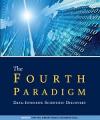Computational and Inferential Thinking: The Foundations of Data Science
by Ani Adhikari, John DeNero
2017
Number of pages: 646
Description:
Data Science is about drawing useful conclusions from large and diverse data sets through exploration, prediction, and inference. Our primary tools for exploration are visualizations and descriptive statistics, for prediction are machine learning and optimization, and for inference are statistical tests and models.
Download or read it online for free here:
Read online
(online html)
Similar books
 Computer Science from the Bottom Up
Computer Science from the Bottom Upby Ian Wienand - bottomupcs.com
Computer Science from the Bottom Up: a free, online book designed to teach computer science from the bottom end up. Topics covered include binary and binary logic, operating systems internals, toolchain fundamentals and system library fundamentals.
(16800 views)
 Foundations of Computation
Foundations of Computationby Carol Critchlow, David Eck - Hobart and William Smith Colleges
The book covers material on logic, sets, and functions that would often be taught in a course in discrete mathematics. The second part covers automata, formal languages, and grammar that would ordinarily be encountered in an upper level course.
(15587 views)
 The Fourth Paradigm: Data-Intensive Scientific Discovery
The Fourth Paradigm: Data-Intensive Scientific Discoveryby Tony Hey, Stewart Tansley, Kristin Tolle - Microsoft Research
The Fourth Paradigm, the collection of essays expands on the vision of pioneering computer scientist Jim Gray for a new, fourth paradigm of discovery based on data-intensive science and offers insights into how it can be fully realized.
(18125 views)
 GRE Computer Science Test Practice Book
GRE Computer Science Test Practice Book- Educational Testing Service
This book contains one actual, full-length GRE Computer Science Test and test-taking strategies. The test consists of about 70 multiple-choice questions, some of which are grouped in sets and based on diagrams, graphs, and program fragments.
(19424 views)